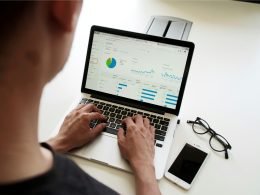The definition of big data is data that is large in variety, volume, and velocity. The three v’s of big data is something we’ll cover in more detail. The evolution of big data analytics gives rise to the ever-growing online retail market that demands the need to process mass amounts of data to improve business functions. And, it typically can’t be processed by traditional computing software. It requires software that can analyse large amounts of data and quantify it into usable data.
Below, we’ll look at the history of big data, how businesses can use it, and what the future has in store.
The History
Large data sets are nothing new. Businesses have had the task of divulging mass amounts of data from as early as the 60s when the world of data really kicked off. But it wasn’t until around 2005 when the growth of Facebook and Youtube dominated the online world – causing industry leaders to realise there was a mass amount of data produced by these platforms.
Around the same time, a company called Hadoop came to life as an open-source framework with the ability to analyse and store big data sets. More open-source companies formed, but it was Hadoop that set precedence for the world of big data that was to come. They made it possible for big data to be easy to store and process – and in the years since, the volume of big data processing increased ten-fold.
Plus, with the creation of the Internet of Things, we’re more connected to the digital world than ever. There are millions of devices connected to the internet constantly collecting information on consumer patterns and product performance. That led to the creation of marketing intelligence software that harnesses big data processing power to create transferrable data sets that businesses can use to support future growth.
Then you have to factor in machine learning and artificial intelligence, which is further adding to the growing number of data processed daily.
The Three V’s Of Big Data
The three v’s of big data are volume, velocity, and variety. Big data has to have the three to form part of the big data definition. Let’s take a look at them in more detail.
Volume
Volume is what the word means – there has to be a large volume of data collected at once. Before processing, data will be high volume but also low-density and unstructured. That might be data pulled from mobile apps, web pages, and even social media feeds. One study found that 2.5 quintillion bytes are created each day. For that reason, some larger companies process terabytes and even Petabytes of data.
Velocity
Velocity measures how fast the data pour in – and for some companies, this can be endless. The higher velocity streams of data usually stream into memory rather than written to a disk. And, some of the internet-enabled smart products that operate in real-time need real-time action, something which harnessing the power of big data sets can provide.
Variety
Long gone are the days of processing one set of data from one location. Now, data is processed in multiple forms, from video and text to social media graphics. These unstructured and semistructured data sets need additional preprocessing to help unearth their meaning.
The Benefits of Harnessing Big Data
There are numerous benefits to harnessing the power of big data for a business. One of the ways it helps is by providing an in-depth view of the market, including trends. Consumer preferences change by the minute, and big data can help businesses see where new trends might emerge or where old trends are dying out.
As a result, businesses can offer better products and services to suit consumer needs. One example of a company that harnessed the power of big data to its advantage is Disney with its introduction of the MagicBand initiative. Disney launched the MagicBands to collect mass amounts of data as customers move around the parks by connecting with hundreds of sensors at different points. That allowed Disney to track consumer habits while in the parks and elevate their experience.
That’s just one example of a company collecting and using big data sets in a way that isn’t considered traditional. Many others have invested in the power of big data to improve consumer shopping experiences and support future business growth.
The Future
The future of big data will grow as the number of people connected to the digital world does. Further integration with cloud software will make it easier than ever to access and store mass amounts of data. Many predict, however, that the future of big data lies with governance. There was previously a focus on speed and accessibility that often neglected governance.
The growing focus on governance should lead to multiple disparate solutions replacing the current single data management platforms, which should also help with data integration.
Big data is a big deal. Companies globally benefit from harnessing the power of big data because data is everywhere. If used correctly, big data is the new fuel for business success due to its capability of generating significant value. And, with the rise of machine learning, big data is only going to get bigger.










